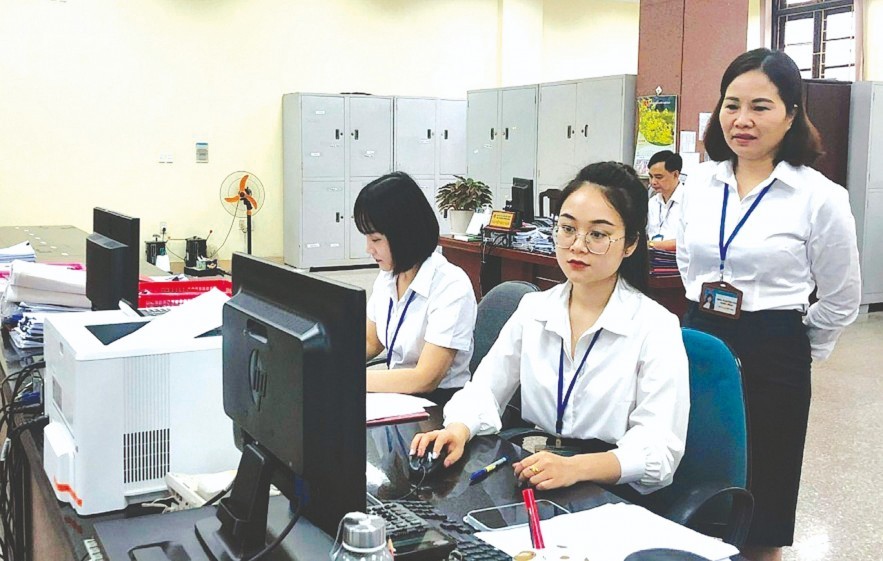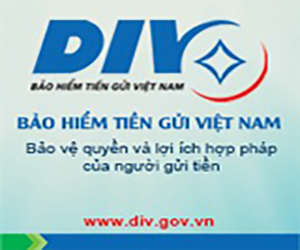Centralized and unified operation of the whole system
According to Mr. Tran Quan, General Director of the ST, one important task for successfully implementing “the State Treasury Development Strategy to 2030” is to organize the management of the State funds in a centralized and unified manner throughout the system, linking treasury management with budget management and debt management; improve the quality of cash flow forecasting; and continue to effectively implement operations using idle temporary State funds.
 |
| Bac Giang State Treasury officials examine budget data on the online public service system. Photo: HT |
As a result, the ST has managed the State funds under the principles of centralization and consistency. At the end of each working day, all State funds surplus balances from localities are centrally concentrated and deposited at the State Bank of Vietnam (SBV) to facilitate management and ensure the SBV's liquidity, as well as to assist the SBV in managing the money supply in the monetary market, lowering the cost of operating monetary policy, and contributing to macroeconomic stability and socioeconomic development.
Unused temporary surplus balances of central and local budgets, as well as money from State financial funds, units, and organizations deposited in the ST, shall be managed and used under the State Budget Law and the Government's Decree No. 24/2016/ND-CP dated April 5, 2016, on the management of State funds.
The temporary surplus balance source is specifically used by the State budget to borrow (to offset the deficit and repayment of principal) and advance to the State budget (when the revenue source is not concentrated in time); the loan term and advance shall not exceed 12 months. In particular, in recent years, the temporarily idle State funds have been lent to the central budget, reducing the pressure to mobilize the capital of government bonds from the market, particularly when market conditions are not favorable for the issuance of government bonds, interest rates have increased, demand for government bonds has decreased, and the issuance plan of government bonds has been adjusted and reduced. By lending to the central budget, it has closely linked the management of the State funds with the management of the budget and public debt, helping the central budget reduce interest payments by trillions of Dong per year.
The remainder of the temporarily idle State funds is deposited on a term basis at commercial banks with a high level of safety according to the SBV's assessment (to ensure safety without loss of State funds) and resale of government bonds. The shelf life is no more than 3 months and is implemented in the form of competitive bidding for interest rates, ensuring publicity and transparency.
However, the ST stated that this is a short-term idle source (up to 12 months). Therefore, the use of State funds to lend to the State budget must be controlled at an appropriate level so as not to affect the State funds' solvency and avoid creating pressure to repay debts in the short term of the State budget.
With the solutions in place, the ST has so far paid the State budget 19,078.6 billion VND in revenue from State funds management.
Efficient use of financial resources
Implementing the State Treasury Development Strategy to 2030, the ST continues to offer a variety of orientations and solutions to modernize State funds management in line with the strategy's development process.
Mr. Luu Hoang, Director of the Treasury Management Department of the State Treasury, demonstrated that the unit will continue to review mechanisms and policies related to treasury management activities to study and report to competent authorities to supplement and complete the legal framework, create conditions for safe and effective management activities, ensure publicity and, transparency, compliance with global good practices.
At the same time, the ST continues to closely follow the socioeconomic management guidelines, the national financial plan and borrowing, repayment of public debt for 5 years, and the State budget estimate for 2023; proactively implement State funds management to fully and promptly meet the payments of the State budget and transaction units.
The ST also keeps concentrating on all non-term deposits of the ST at the SBV for State funds, facilitates the payment of the ST, and uses the temporarily idle State funds, contributing to increasing central budget revenue. The temporarily idle State funds continue to be prioritized for the State budget to advance and borrow under regulations to save the borrowing costs of the State budget; link among funds management, budget management, and debt management, contributing to improving the efficiency of using State financial resources.
Simultaneously, the temporarily idle State funds are used for treasury investment operations under the law to improve the efficiency of State funds use and increase revenue for the State budget./.




















































